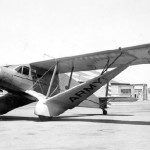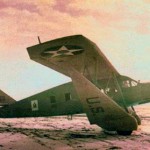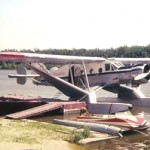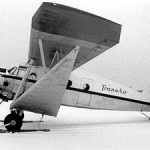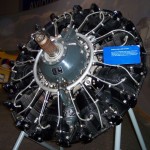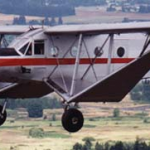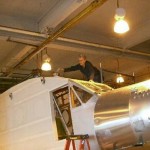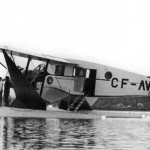
Known as the P-100, P-200, and P-300 “Airbus” and upgraded to six variants of the “Bellanca Aircruiser” in the civilian world, the Bellanca C-27 was a limited production, high-wing workhorse designed with packages that could carry people or cargo and land on land, water, or snow.
The plane came out of a Golden Age of Flight desire to have a plane that could fly non-stop from New York to Rome. Designer Giuseppe Bellanca came up with a plane called the Model K, which never flew. But the distinctive design survived.

The plane was extremely efficient. The original P-100 could fly at a cost of around 8 cents per mile, in 1930 figures. It was also reliable and easily re-configurable, making it a popular “bush plane” for rough terrain and wilderness cargo and passenger hauls.
But the plane was doomed, from an American military or commercial standpoint, almost as soon as it came on the market. In 1934, U.S. federal regulations banned single-engined transports and passenger airliners. The plane gained a market in Canada, where it was used for carrying ore from and supplies to remote mines.
Only 23 planes were built, and only two are known to exist today. One famous civilian “Aircruiser,” known as the “Eldorado Radium Silver Express” crashed in Northern Ontario in 1947 after running out of fuel. The plane was beat up that its owner abandoned the plane to the elements. The Western Canada Aviation Museum in Winnipeg is working on a long-term restoration of the plane as of 2013. The museum posted, in 2011, a virtual cockpit tour of the plane.

This beautiful “Flying W” quite nearly became the most famous plane in the world, when Charles Lindbergh and his team came within a hair of purchasing the “Aircruiser” to attempt the famous new York to Paris Flight. Charles Levine, the chairman of Columbia Aircraft Corporation which was the firm brokering for Bellanca, offended Lindbergh when Levine insisted on choosing his own crew to make the historic flight. Lindbergh refused and went on to purchase the “Spirit of St. Louis,” a custom build from Ryan Airline Company.
Lindbergh made the flight, and “Spirit of St. Louis” became world-famous. The “Aircruiser” does have the distinction of being the first plane to fly from New York to Berlin and the first place to cross the Pacific ocean.
Live footage of the C-27 was used in the historic early television cartoon “Clutch Cargo.”
This C-27 should not be confused with the modern Aeritalia G.222/C-27A and Alenia C-27J “Spartan.”
Specifications
General
Crew: one, pilot
Capacity: 16 passengers (with passenger configuration)
Length: 43 ft 4 in
Wingspan: 65 ft 0 in
Height: 11 ft 6 in
Empty weight: 6,072 lb
Engines: One Wright R-1820 Cyclone 9 9-cylinder supercharged air-cooled radial engine, 710 hp
Performance
Maximum speed: 165 mph
Range: 700 miles
Ceiling: 22,000 ft
Armament
None.
Essential Reading
Online Resources
- Wikipedia — Good resource, listing of variants, few photos
- Tillamook Air Museum
- Western Canada Aviation Museum
- bellanca-championclub.com — Great resource, history, links, photos, etc.
